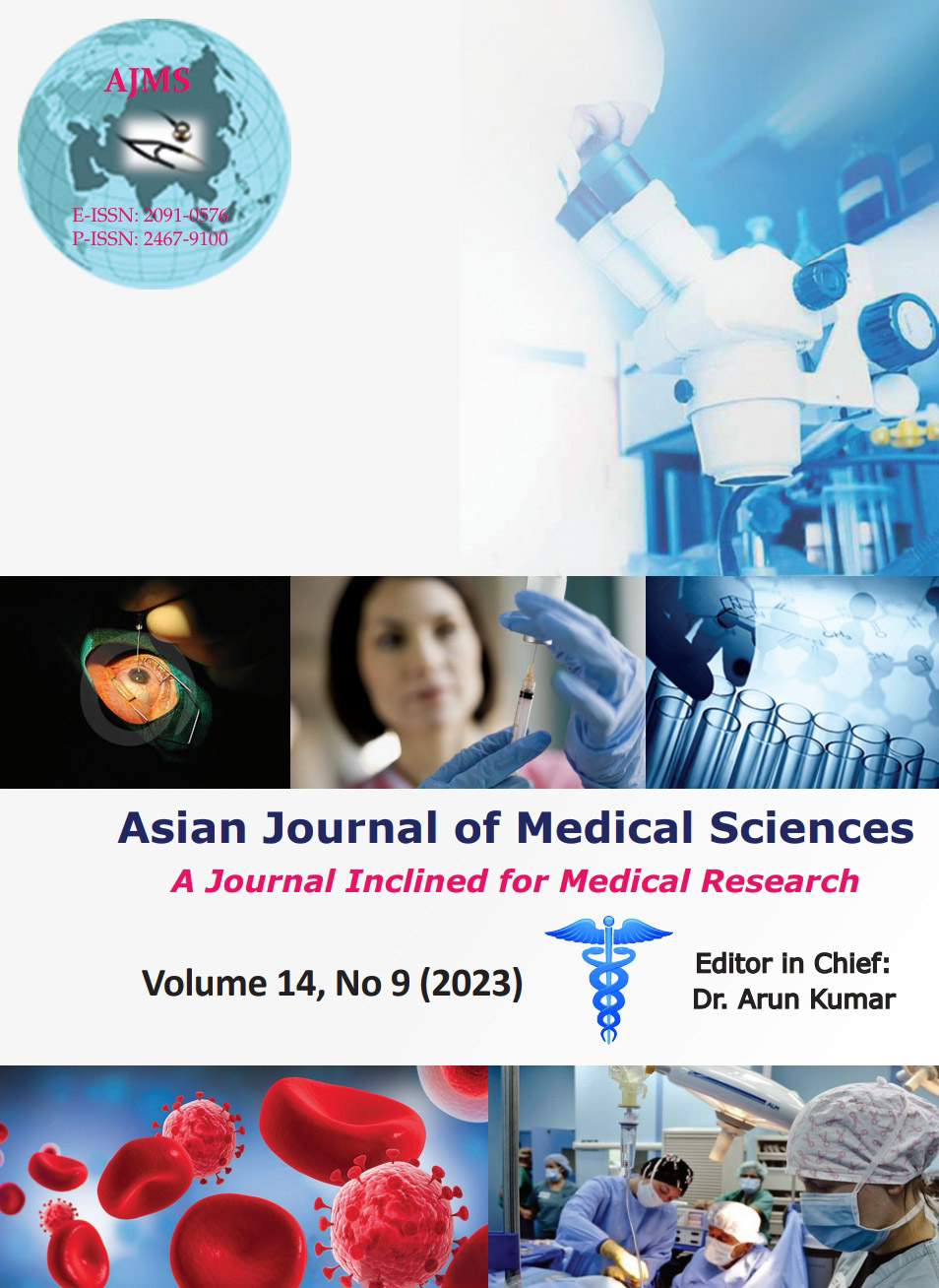Clinical assessment of etiological risk factors of chronic kidney disease in patients admitted for dialysis to a tertiary care hospital
Keywords:
Chronic kidney disease; End-stage renal disease; Dialysis; Etiology; Hypertension; Diabetes mellitusAbstract
Background: Chronic kidney disease (CKD) is defined as a reduced glomerular filtration rate, increased urinary albumin excretion, or both, and it is an increasing public health problem with a prevalence of 8–16%. However, there is a paucity of such studies evaluating risk factors among dialysis patients in India and also there could be associated setting specific varied contributory factors. Hence, we have undertaken this study to assess common risk factors in CKD patients admitted for dialysis to a Tertiary Care Hospital.
Aims and Objectives: To assess the clinical presentation and the common risk factors in CKD patients admitted for dialysis to tertiary care hospital.
Materials and Methods: The present study was cross-sectional study in which 100 CKD patients admitted to the dialysis unit of tertiary care hospital were included on the basis of predefined inclusion and exclusion criteria and were analyzed as regards the history of illness, environment, and physical behavior was collected based on various pre-validated questionnaires (The WHO STEP wise approach to chronic disease risk factor Surveillance questionnaire for NCDs, dietary questionnaire, environmental/occupational questionnaire, and patient history questionnaire) in a face-to-face interview with participants and their family members. Etiological Risk Factors and clinical assessment of patients were studied. P<0.05 was taken as statistically significant.
Results: 49 (49%) of the study participants were from the age group of 41 to 60 years with the mean age of the 51.9±12.3 years. There was a male ponderance with M: F ratio being 1:0.61. The most common underlying condition responsible for end-stage renal disease (ESRD) was hypertension (25%) followed by diabetes mellitus (21%), glomerulonephritis (18%), analgesic nephropathy (15%), and renal stones (8%). CKD of unknown etiology was present among 7% and polycystic kidney 6%. Common clinical presentation in studied cases was anorexia (61%) followed by easy fatigability (58%) patients, Facial puffiness (49%), weakness (45%), and oliguria (44%).
Conclusion: Male gender, advancing age, and occupational exposure to nephrotoxic metals were the baseline risk factors. Hypertension and diabetes mellitus were the two most common comorbidities among ESRD patients which are the important risk factors for progression to ESRD.
Downloads
Downloads
Published
How to Cite
Issue
Section
License
Copyright (c) 2023 Asian Journal of Medical Sciences

This work is licensed under a Creative Commons Attribution-NonCommercial 4.0 International License.
Authors who publish with this journal agree to the following terms:
- The journal holds copyright and publishes the work under a Creative Commons CC-BY-NC license that permits use, distribution and reprduction in any medium, provided the original work is properly cited and is not used for commercial purposes. The journal should be recognised as the original publisher of this work.
- Authors are able to enter into separate, additional contractual arrangements for the non-exclusive distribution of the journal's published version of the work (e.g., post it to an institutional repository or publish it in a book), with an acknowledgement of its initial publication in this journal.
- Authors are permitted and encouraged to post their work online (e.g., in institutional repositories or on their website) prior to and during the submission process, as it can lead to productive exchanges, as well as earlier and greater citation of published work (See The Effect of Open Access).




